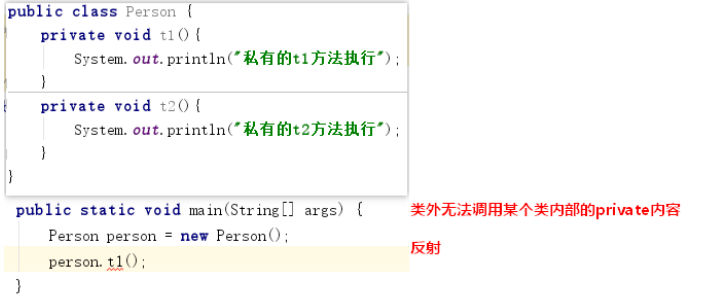
Let's gather the results of getDeclaredFields() on Employee.class and Employee.class. Java Core Reflection mechanism and bytecode generation, leaving the language and. This gives us the superclass of another class, without us needing to know what that superclass is. extensions: the double-dispatch use-case. Based on this scenario, the use of reflection as an effect appears.
#JAVA REFLECTION USE CASE HOW TO#
Class. How to Use Reflection for Parametric Validation. There are several reasons: Poor performance Because java's reflection determines types dynamically, it scans the classpath to find the class to load, resulting in slow program. Why shouldn't we use reflection in normal programming when we already have access to interfaces and classes. We use two methods for this purpose as described below before moving ahead as follows: getDeclaredMethod() invoke() Method 1: getDeclaredMethod(): It creates an object of the method to be invoked. Limitations when working with reflection in Java. Again, this isn’t the only way to go about things, but it’s certainly an efficient way in some cases.In this case, we can make use of another method of the Java Reflection API: Class::getSuperclass. We can invoke a method through reflection if we know its name and parameter types. This can be a great way to add or replace functionality of existing classes. I’ve seen another example where somebody wrote a proxy LinkedList class, where you could add objects but not delete them, essentially creating a “write only” LinkedList. The things you can do with this is almost endless. While this should optimally be solved by modifying the field.
#JAVA REFLECTION USE CASE CODE#
TO DO: Test the developed code on these 3 example cases. That’s pretty darn cool, especially because Java let’s us do this without any 3rd party libraries. A good example of reflections is to get a private field of another class. Reflection is used internally by many Java technologies including IDEs/compilers, debuggers. The handler of whatever is being wrapped, as you can see above BankProxyHandler is the handler for the BankImpl() Public class BankProxyHandler implements InvocationHandler ģ. “InvocationHandler” required by the proxy API.

Its also used at a lower level by object serialization to tear. Martin (162), that demonstrates the usefulness of Java Reflections. The Reflection API is used by JavaBeans to determine the capabilities of objects at runtime. Here’s some excellent example code from, Clean Code, by Robert C. Imagine on systems with only a few kilobytes of memory, even the executed code section of a program would have to write to itself to save precious space. In fact, polymorphic code in C was quite useful when the program itself could only be a certain size. Yes, you could of course do the calculations by hand and figure out the big-O of the operations and prove a hash map would be more efficient in most cases, hence why this is just a simple example I pulled out of thin air, but what if you don’t know how your user is going to use your program? Self modification might be the only way, especially in embedded systems. Imagine a program that learns through successive runs that a hash map works more efficiently than a list, and then from there on out uses a hash map instead. Java What is reflection, and why is it useful Java Reflection Example. In general, altering or bypassing the accessibility of classes, methods, or fields. One advantage of reflection API in Java is, it can manipulate private members of the class too.

Reflection API in Java is used to manipulate class and its members which include fields, methods, constructor, etc. It is also possible to instantiate new objects, invoke methods and get/set field values using reflection. Reflection should not be used to increase accessibility of records fields. Java Reflection is the process of analyzing and modifying all the capabilities of a class at runtime. It is hard to think of exact specific reasons of why you would want to use reflections in Java, but it’s easy to think of abstract reasons. Java Reflection makes it possible to inspect classes, interfaces, fields and methods at runtime, without knowing the names of the classes, methods etc.

According to this stackoverflow thread, the reason C++ doesn’t have reflections is simply compressed to: it’s a lot of work to implement and they already have template metaprogramming which is deemed “good enough”. C++ does not have a standard reflections library like Java, so it’s a nice feature that might put Java ahead of C++ if you’re choosing which language supports self-modifying code and metaprogramming better. Today I am going to demonstrate some useful ways we can apply Reflections in Java.


 0 kommentar(er)
0 kommentar(er)
